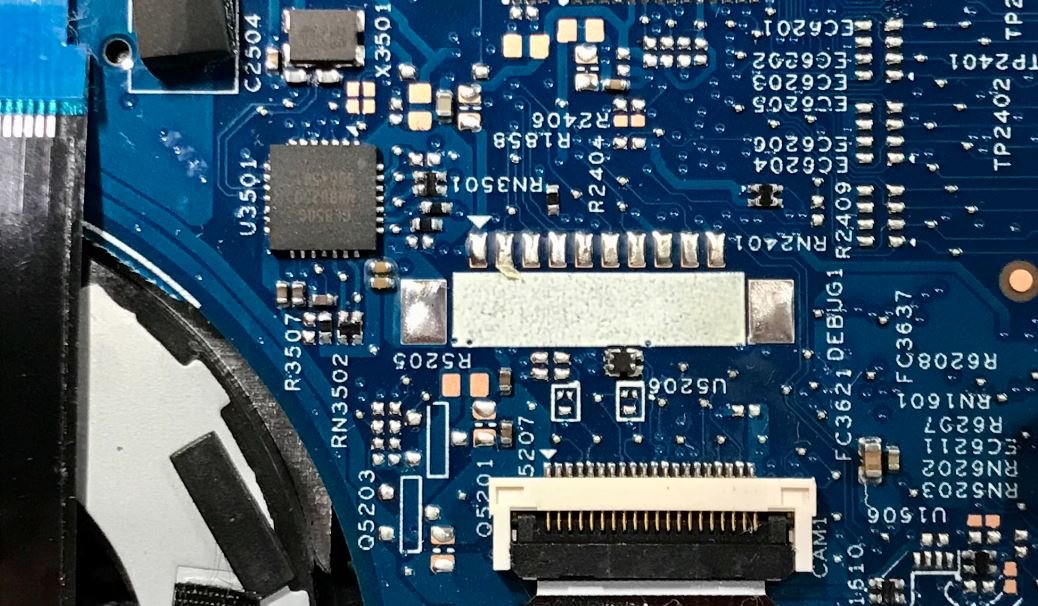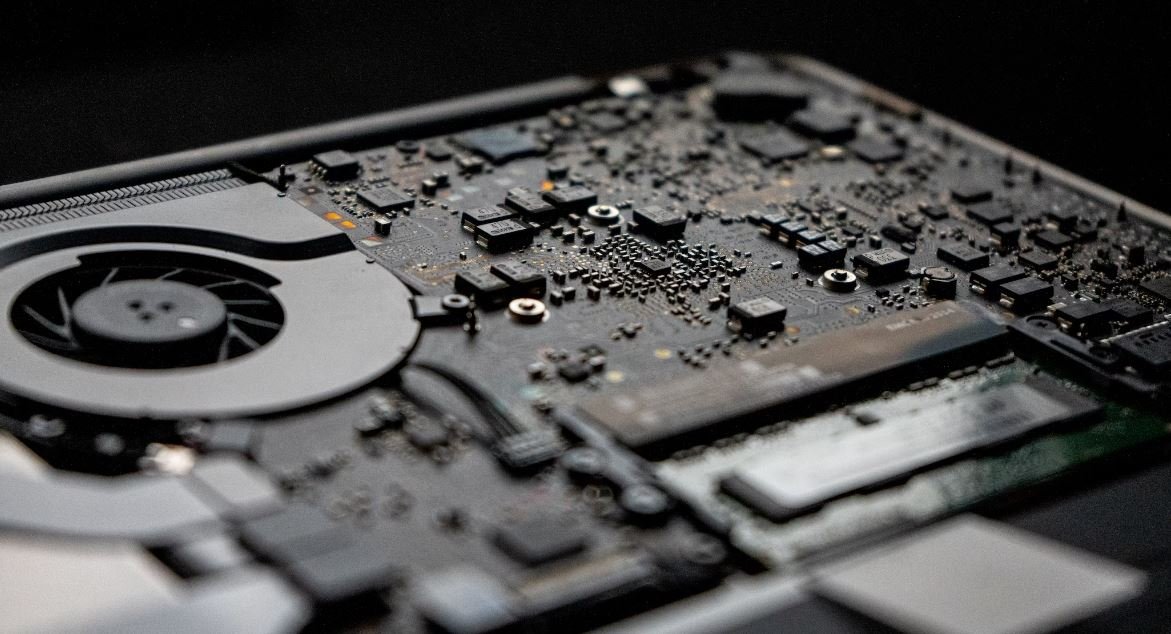AI Applications in Agriculture
With the rapid advancements in technology, artificial intelligence (AI) is revolutionizing the agricultural industry. Farmers and agriculture professionals are increasingly turning to AI to enhance productivity, improve efficiency, and optimize resource allocation. From crop monitoring to automated machinery, AI is transforming the way farming is done. Let’s explore the various applications of AI in agriculture.
Key Takeaways
- AI technology is being utilized in agriculture to improve productivity and efficiency.
- Crop monitoring, yield prediction, and irrigation management are some key AI applications in farming.
- AI-driven machinery and robots are automating repetitive tasks, reducing human labor and costs.
- Precision farming enables targeted application of resources, leading to reduced waste and environmental impact.
Crop Monitoring and Disease Detection
One of the most significant applications of AI in agriculture is crop monitoring and disease detection, which helps farmers identify crop health issues and take timely action to prevent losses. Using computer vision and deep learning algorithms, AI-powered systems can analyze images of crops and identify diseases, pests, nutrient deficiencies, and other abnormalities. This allows farmers to make data-driven decisions on crop treatments and optimize resource utilization. *AI can detect specific diseases in crops with a high level of accuracy, enabling targeted interventions.*
Yield Prediction and Quality Control
AI algorithms can analyze diverse sets of data, such as weather patterns, soil composition, and historical crop yields, to predict future crop yields with a high degree of accuracy. Farmers can leverage this information to optimize planting strategies, allocate resources efficiently, and manage supply chains effectively. Additionally, AI can facilitate quality control by identifying defects and abnormalities in harvested produce during sorting and grading processes. *Using AI for yield prediction helps farmers make informed decisions and boosts overall crop productivity.*
Irrigation Management
Water scarcity is a major challenge in agriculture, making efficient irrigation critical for sustainable farming. AI-powered irrigation systems use real-time data from soil sensors, weather forecasts, and crop water needs to optimize irrigation schedules and water distribution. By analyzing a range of inputs, AI can determine the exact amount of water required, reducing waste and preserving precious resources. *AI-driven irrigation management offers a data-driven approach to water efficiency, ensuring optimal irrigation practices.*
AI-Driven Machinery and Robots
AI is revolutionizing agriculture machinery and robotics, enabling automated and autonomous operations. AI-powered machines equipped with sensors, computer vision, and advanced algorithms can perform tasks such as plowing, planting, spraying, and harvesting with precision and efficiency. These machines not only reduce the need for human labor but also minimize errors and increase productivity. *The use of AI-driven machinery in agriculture improves operational efficiency and reduces the labor-intensive nature of farming.*
Precision Farming
Precision farming is a farming management concept that leverages AI and data analytics to optimize the use of resources, including fertilizers, pesticides, and water. By gathering data from sensors, satellites, and drones, AI can create detailed field maps and recommend targeted interventions, such as variable rate application of inputs. This approach reduces waste, improves crop health, and minimizes environmental impact by ensuring resources are used precisely where and when they are needed. *Precision farming is transforming agriculture by enabling efficient resource allocation and sustainable practices.*
Tables
| AI Application | Benefits |
|---|---|
| Crop Monitoring and Disease Detection | – Timely identification of crop health issues – Optimal resource utilization – Improved decision-making |
| Yield Prediction and Quality Control | – Optimized planting strategies – Efficient resource allocation – Effective supply chain management |
| Advantage | Description |
|---|---|
| Reduced labor costs | AI-driven machines reduce the need for manual labor, saving costs for farmers. |
| Increased productivity | AI-powered machinery performs tasks with precision and efficiency, leading to higher output. |
| Benefit | Description |
|---|---|
| Resource optimization | Precision farming ensures targeted application of resources, reducing waste and improving efficiency. |
| Sustainability | By minimizing environmental impact and preserving resources, precision farming promotes sustainable practices. |
As technology advances, the applications of AI in agriculture continue to expand. The integration of AI-driven solutions in farming practices is transforming the industry by improving productivity, reducing costs, and promoting sustainable practices. From crop monitoring and disease detection to precision farming and AI-powered machinery, the possibilities are vast. Embracing these AI applications empowers farmers to make data-driven decisions and optimize resource allocation, leading to a more efficient and sustainable future for agriculture.

Common Misconceptions
Misconception 1: AI will replace human farmers completely
One common misconception about AI applications in agriculture is that it will completely replace human farmers, making their roles obsolete. However, this is far from the truth. AI technology in agriculture is designed to assist and enhance human capabilities, not replace them. It can help farmers make informed decisions based on data analysis and predictive modeling, but human expertise is still invaluable.
- AI applications in agriculture aim to support human farmers, not replace them.
- Human expertise is essential in managing complex factors such as soil conditions and weather patterns.
- AI technology can work alongside farmers to optimize crop yield and improve overall efficiency.
Misconception 2: AI applications are only applicable to large-scale farming
Another common misconception is that AI applications in agriculture are only suitable for large-scale farming operations. While AI can certainly benefit larger farms due to the volume of data involved, it can also be implemented in smaller-scale and even urban farming scenarios. The key is to adapt the technology to the specific needs and limitations of each farming operation, ensuring its practicality and effectiveness.
- AI applications in agriculture can be adapted to suit both large-scale and small-scale farming operations.
- The technology can be implemented in urban farming to maximize limited space and resources.
- AI tools can assist small-scale farmers in optimizing their farming practices and enhancing productivity.
Misconception 3: AI applications in agriculture are complex and difficult to implement
Many people believe that AI applications in agriculture are highly complex and difficult to implement, requiring extensive technical knowledge. While there are certainly advanced AI models and algorithms available, there are also user-friendly AI tools specifically designed for farmers with little to no technical background. These tools provide user-friendly interfaces and automated processes, making it easier for farmers to adopt AI technology.
- AI applications in agriculture are available in easy-to-use forms, requiring minimal technical knowledge.
- User-friendly AI tools simplify the implementation process for farmers with limited technical background.
- Farmers can access online tutorials and support communities to learn and troubleshoot AI applications.
Misconception 4: AI applications in agriculture only focus on crop management
Another misconception is that AI applications in agriculture only focus on crop management. While optimizing crop yield is a significant application, AI technology also plays a role in various other areas, including livestock management, pest control, soil analysis, and predictive maintenance. By utilizing AI, farmers can gain insights into multiple aspects of their operations, leading to more efficient and sustainable practices.
- AI applications in agriculture extend beyond crop management to other areas like livestock management and pest control.
- AI technology can analyze soil conditions, detect nutrient deficiencies, and recommend suitable fertilizers.
- Predictive maintenance using AI can help farmers identify potential equipment failures in advance.
Misconception 5: AI applications in agriculture are too expensive for small farmers
Many small farmers believe that AI applications in agriculture are too expensive and unaffordable for their operations. However, the cost of AI technology has been decreasing over time, and there are affordable options available that cater to the needs of small-scale farmers. Additionally, the long-term benefits in terms of improved productivity, reduced resource waste, and optimized yield can often justify the investment for small farmers.
- The cost of AI applications in agriculture is becoming more affordable, even for small-scale farmers.
- The long-term benefits, such as increased productivity and optimized yield, can justify the initial investment.
- Government subsidies and funding programs may be available to support small farmers in adopting AI technology.

AI Applications in Agriculture
Artificial intelligence (AI) is revolutionizing the agricultural industry in numerous ways. From optimizing crop yields to streamlining labor-intensive tasks, AI technology is making a significant impact on farming practices. The following tables highlight some fascinating applications of AI in agriculture.
Improving Crop Disease Detection
Table showcasing the accuracy of AI algorithms in identifying common crop diseases, such as wheat rust, potato blight, and citrus canker, compared to traditional methods.
Enhancing Livestock Monitoring
Data on the effectiveness of AI-powered sensors and monitoring systems in tracking animal health, behavior patterns, and vital signs, leading to early disease detection and improved animal welfare.
Predicting Weather Patterns
A table displaying the accuracy of AI forecasting models in predicting rainfall, temperature fluctuations, and extreme weather events, enabling farmers to make informed decisions about planting, irrigation, and pest control.
Optimizing Pest Control
Data demonstrating the successful use of AI-driven pest management systems to identify infestations, model insect behavior, and implement targeted control measures, resulting in reduced pesticide use.
Enhancing Soil Quality
Table illustrating the effectiveness of AI algorithms in soil analysis, monitoring nutrient levels, and suggesting precise recommendations for fertilizers and soil amendments, thus improving crop productivity and sustainability.
Automating Harvesting
Data on the adoption of AI-based robotic harvesting systems, showcasing increased efficiency, decreased labor costs, and reduced crop loss due to timely and accurate harvesting.
Optimizing Irrigation Practices
A table presenting the water savings achieved through AI-powered irrigation systems that analyze real-time data, including moisture levels, weather conditions, and crop water requirements, leading to more efficient water usage.
Monitoring Crop Growth
Data on the use of AI-based imaging technologies to monitor and analyze crop growth stages, identify nutrient deficiencies, and optimize fertilization, resulting in higher yields and reduced resource wastage.
Improving Crop Planning
A table showcasing the benefits of AI algorithms in crop yield prediction, determining optimal planting dates, and recommending suitable crop rotations to maximize productivity while considering environmental factors.
Streamlining Supply Chain Logistics
Data illustrating the integration of AI technologies, such as autonomous drones and smart sensors, in optimizing transportation routes, reducing delivery times, and minimizing losses in the agricultural supply chain.
In conclusion, AI applications in agriculture have demonstrated immense potential in improving efficiency, sustainability, and productivity across various aspects of farming. From crop disease detection to streamlining supply chain logistics, AI technology is revolutionizing the way we approach agriculture, paving the way for more sustainable and effective farming practices.
Frequently Asked Questions
What are some AI applications in agriculture?
A few examples of AI applications in agriculture include crop monitoring, disease detection, yield prediction, automated irrigation systems, and autonomous vehicles for farming tasks.
How does AI help in crop monitoring?
AI can analyze data from various sources, such as satellite imagery and IoT sensors, to monitor crop health, predict growth patterns, identify nutrient deficiencies, and detect pest infestations.
Can AI detect diseases in plants?
Yes, AI can analyze images of plants to detect signs of diseases and nutrient deficiencies. Machine learning algorithms can be trained on vast datasets to accurately identify specific diseases and provide early detection for prompt treatment.
What is yield prediction and how is AI involved?
Yield prediction is the estimation of crop production. AI algorithms can analyze historical and real-time data, including weather conditions, soil quality, and crop health, to predict the future yield with high accuracy.
How do automated irrigation systems benefit from AI?
AI can optimize irrigation systems by considering various factors like weather forecasts, soil moisture levels, and crop water requirements. This enables efficient water management, minimizes waste, and promotes optimal crop growth.
What role can AI play in autonomous vehicles for farming?
AI enables autonomous vehicles, such as drones and robotic harvesters, to navigate fields, monitor crops, and perform tasks like planting, spraying, and harvesting. These vehicles utilize computer vision and AI algorithms to make informed decisions in real-time.
How does AI improve efficiency in livestock management?
AI can help monitor and analyze data related to livestock health, behavior, and productivity. By detecting anomalies or patterns, AI systems can alert farmers about potential health issues, optimize feeding schedules, and predict the best time for breeding.
Can AI assist in food quality control?
Yes, AI can automate quality control processes by analyzing images, sounds, or even smells of food products. This can help identify contaminants, detect spoilage, ensure proper packaging, and maintain consistent quality standards.
Are there any AI applications in agricultural logistics?
Absolutely! AI can optimize supply chain management, including inventory management, transportation route planning, and demand forecasting. This helps reduce inefficiencies, minimize waste, and ensure timely delivery of agricultural products.
Is AI useful for sustainable farming practices?
Yes, AI can enable sustainable farming practices by providing insights into resource management, reducing chemical usage, optimizing energy consumption, and promoting precision agriculture techniques. This helps minimize environmental impact while maximizing productivity.





